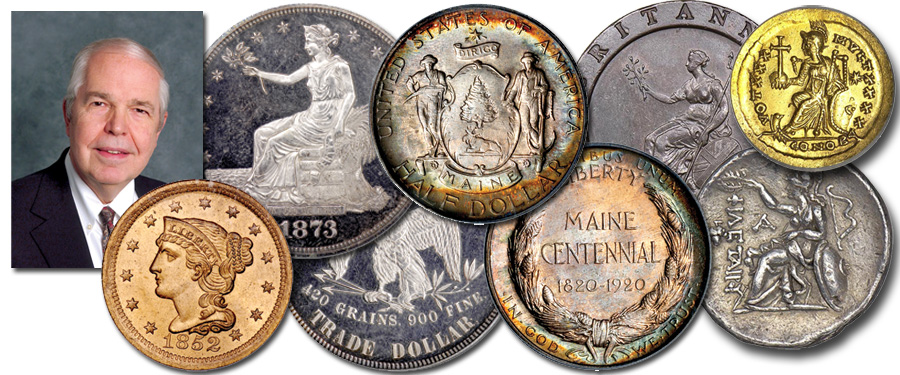
• The seated figure of a goddess on coinage was not new with the Liberty Seated silver coinage of the 19th century, but was used earlier on British and other coins, and before that on coins of ancient Rome.
• When trade dollars were first minted in 1873 they were legal tender for a dollar – a status they maintained until Congress demonetized them on July 22, 1876. However, thanks to the Coinage Act of 1965 (yes, 1965), trade dollars became legal tender once again. (But who would want to spend one?)
• In the 1840s and 1850s the Philadelphia Mint would sometimes restrike coins of earlier dates to supply requests from collectors. The Royal Mint in London did the same thing; once we owned an 1839 British Proof set containing an 1839 halfpenny struck over a halfpenny dated 1843!
• A few years too early: In 1787 an engraver made a die for a Connecticut copper coin mistakenly dated 1877. He then realized his error and corrected it, creating the 1787 over 1877 coin known to collectors today.
• During the Civil War, large cents, last minted in 1857 and no longer seen in circulation in the United States, were a glut in commercial channels north of the border in California.
• British pounds, shillings and pence were legal tender in the State of New Hampshire until 1950. By some oversight, the State Legislature didn’t take this provision off the books until that date.
• The identity of the person who designed the 1920 Maine Centennial half dollar is unknown, although Anthony de Francisco, designer of the Peace dollar, prepared the models from the designs.
• In the 1840s and early 1850s there were more silver Spanish-American two-bit pieces in circulation in the United States than there were comparably sized Liberty Seated quarters.





